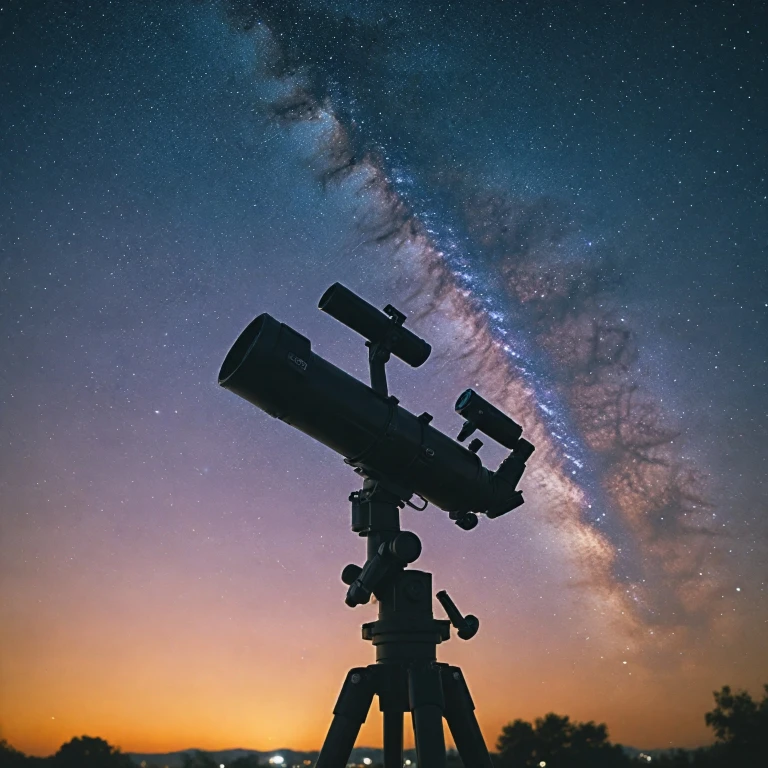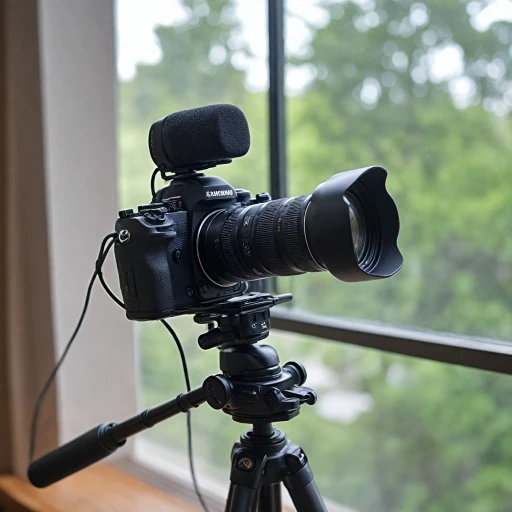Introduction to the Sony a6000
The Sony a6000 offers entrants into the world of astrophotography a powerful yet compact option, bridging the gap between casual shooting and more advanced setups. As part of the Sony Alpha series, this mirrorless camera supports interchangeable lenses and offers an ideal balance of performance and portability, making it suitable for astro enthusiasts who wish to capture the cosmic dance of stars and light.
Equipped with a 24.3-megapixel APS-C sensor, the a6000 is renowned for its low noise levels, especially in low light conditions, an essential feature when photographing the night sky. Its impressive burst mode and fast autofocus facilitate image capture of fast-moving celestial events and are bolstered by mount adapters that enable usage with nearly any lens, expanding its versatility even further.
However, seeing these luminous wonders clearly often requires some additional equipment. When the camera is paired with a telescope, like a Schmidt-Cassegrain, this opens up a clearer view to the depths of space. Partnering the right mount adapter allows you to seamlessly integrate the a6000's capabilities with the detailed images a telescope can deliver, capturing moments that are beyond the reach of a regular camera setup.
Whether you're located in the United Kingdom or shipping across the globe, this camera can be easily acquired and transported, allowing you to begin experimenting with the art of astrophotography. For those considering expanding their gear through strategic upgrades, you might want to explore how to maximize your savings with Sony's trade-in program, transitioning to the Sony a6000 or complementing it with additional accessories.
As you venture into astrophotography using the Sony a6000, our blog expands on the necessary steps to mount it onto a telescope, the essential gear to enhance your photos, and the hurdles you might face. Moreover, delve further into methods for optimizing your captures with tips on composition and key post-processing techniques to bring out the clarity and grandeur of your night sky images.
Mounting the Sony a6000 on a Telescope
Connecting Your Sony a6000 with Your Telescope
Mounting a Sony a6000 onto a telescope may seem intimidating at first, but with the right equipment and a bit of patience, it can be a rewarding experience for any astro enthusiast. Before you start snapping away at the cosmos, ensure you have the right tools at hand. First, you'll need a way to securely mount your mirrorless camera onto the telescope. This generally involves using a mount adapter. Look for a T-ring adapter specially designed for the Sony Alpha series. This adapter allows for a seamless connection between the camera's lens mount and the telescope. Once equipped with a T-ring, you can attach it to a compatible T-adapter that connects to the eyepiece projection of the telescope. If you're using a Schmidt-Cassegrain telescope, specific adapters are available that make the setup process even smoother, allowing for a secure fit. When considering the telescope setup, remember that the choice of a telescope affects the clarity and quality of your images. Different telescopes, such as Schmidt-Cassegrain or other Cassegrain types, offer varying benefits in terms of magnification and light-gathering capabilities. For better low light performance, a telescope with a large aperture is advisable. It's crucial to check that all components, from the mount ring to the adapter, are securely fastened without any wobble. Vibration can blur images, so ensuring a stable connection is key. It's also worth noting that some weight issues may arise when using an interchangeable lens system, so a sturdy tripod is recommended. By following these steps, you'll be well on your way to capturing breathtaking images of stars, planets, and other celestial objects with your Sony a6000.Essential Equipment and Accessories
Essential Gear for Astro Images with the Sony a6000
When venturing into the realm of astrophotography, especially with the Sony a6000, having the right equipment can make a significant difference in capturing those breathtaking night sky images. Here are some essential tools and accessories you'll need to pair with your Sony mirrorless camera.- Telescope: A Cassegrain telescope, such as a Schmidt Cassegrain, is ideal due to its compact design and ability to gather more light. More light means clearer images of stars and other celestial objects.
- Mount Adapter: Since the Sony a6000 is a mirrorless camera, you will need a mount adapter to properly attach your camera body to the telescope. Many adapters specifically cater to the Sony mount, ensuring a secure connection.
- Mount Ring: Depending on your scope setup, ensure you have a sturdy mount ring to hold the camera or lens securely, which will help reduce any vibrations during long exposure shots.
- Camera Mount: Consider a tracking camera mount to follow the movement of the stars, enabling longer exposures without trails. This is critical for capturing sharp astro images.
- Interchangeable Lenses: While telescopes do much of the work, having a range of interchangeable lenses for different scenarios, including low light situations, can extend your ability to adapt and capture various celestial phenomena.
- Eyepiece Projection Adapter: To magnify celestial objects, this adapter connects between the telescope and the camera, allowing for eyepiece projection methods.
- Advanced Tools: Consider additional tools like remote triggers, which allow for hands-free shooting to avoid any movement of the setup.
Challenges in Astrophotography with the Sony a6000
Navigating the Challenges of Astrophotography
Astrophotography, especially when using a mirrorless camera like the Sony a6000, can present several challenges that may not be immediately obvious to beginners. While mounting your Sony on a telescope opens up a world of possibilities, it's also where many of the hurdles begin.
One of the first issues you'll encounter is dealing with low light conditions. Capturing the majesty of the stars requires understanding how to manipulate light levels effectively. For this reason, selecting the right lens and mount adapter is critical. For a more advanced setup, consider a Schmidt Cassegrain telescope that can help harness faint celestial light.
Once your camera is mounted, ensuring stability is essential. Any accidental movements can blur your images. A robust tripod and a secure mount ring will help. Additionally, learning how to use eyepiece projection can be beneficial for adaptability with different lens mounts, maximizing your ability to capture stunning images of the night sky.
Another challenge is understanding your camera's settings, such as ISO, exposure time, and focusing in the dark. Given that the Sony a6000 is an interchangeable lens camera, you have more options but also more variables to control. It's crucial to practice focusing and adjusting camera settings under varying light conditions.
Even when you feel ready, weather conditions such as cloud cover and light pollution can impact your results significantly. Planning your sessions around clear nights and learning to work with the light from surrounding stars can improve your overall image quality.
To help overcome these challenges, many enthusiasts find it useful to share experiences and tips with fellow astrophotographers through forums and blog posts. Engaging with community resources can often provide insights that make all the difference in your success.
Tips for Capturing Stunning Night Sky Images
Optimize Your Composition with Strategic Framing
Capturing remarkable images of the night sky requires an understanding of how to frame celestial bodies effectively. Align your telescope with renowned formations such as Orion's Belt or the bright North Star to begin with more recognizable subjects. Adjust your camera position and use the live view to ensure all elements align within the frame. This method helps in creating balanced and visually appealing images.Understanding Exposure and Light Settings
Shooting in low-light conditions demands precise handling of camera settings. First, switch your Sony mirrorless camera to manual mode to gain command over the exposure triangle: ISO, aperture, and shutter speed. Generally, a higher ISO setting is necessary to capture more light, but balance this with noise control to maintain image clarity. Experimenting with longer shutter speeds will help capture faint celestial light, but be cautious of overexposure.Leverage Your Equipment's Full Potential
Enhance your astrophotography by selecting the right lens and mount adapter. Using an interchangeable lens featuring a wide aperture allows more light through, capturing clear images of stars and the sky's diverse colors. Ensure your cameras Sony mount adapter fits securely to avoid any movement during prolonged exposures.Utilize Advanced Focusing Techniques
Focusing on distant stars can be quite challenging. A technique called eyepiece projection, commonly used with cassegrain telescopes, involves focusing directly on a star and using the live view feature to confirm sharpness. It might take some trial and error, but achieving perfect focus is crucial for capturing nebula and distant galaxies with precision.Innovate with Creative Imaging Strategies
Adding novelty to your astrophotography can take it to the next level. Incorporating elements like foreground landscapes or employing a ring light can add depth and intrigue to your night sky images. Don’t shy away from imaginative compositions that set your images apart from traditional astro photography. Remember, mastering astrophotography with your Sony alpha and telescope system requires patience and practice. Keep experimenting, applying new techniques, and seeking inspiration from related content online to elevate your skills.Post-Processing Your Astrophotography Images
Enhancing Your Astrophotography with Powerful Editing Techniques
When it comes to capturing the wonders of the cosmos, post-processing your images is as crucial as the initial shooting phase. The process allows you to fine-tune the images taken with your Sony mirrorless camera attached to a telescope, bringing out the intricate details of the stars and celestial objects captured. Begin by using software like Adobe Lightroom or Photoshop, both of which offer robust tools for adjusting your astrophotography shots.- Noise Reduction: Given that astrophotography often involves low light conditions, noise can be a significant issue. Utilize noise-reduction techniques to smooth out the graininess without compromising the details of your star-filled sky.
- Adjusting Levels and Curves: By tweaking the levels and curves, you can enhance the contrast between the stars and the inevitable noise. This adjustment will help bring the starry details to the forefront, making the celestial bodies appear more vibrant.
- Balancing Colors: Pay attention to the color balance in your images. Adjusting the white balance is particularly important when ensuring that the stars' colors are accurately represented.
- Stacking Images: To further amplify image clarity, consider stacking multiple images. This technique involves layering images to increase detail and reduce noise, which is especially useful when shooting with the adapter mounted on a telescope.



